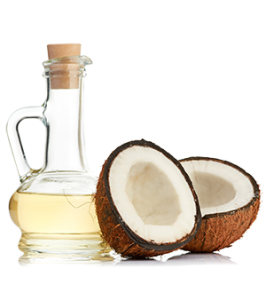
Easy and Natural Steps for Healthy Hair by Bree Ogden
 When it comes to your hair you’ll find all kinds of advice. Before you pick your choice of treatment, get to know and understand your own hair. What type of hair do you have? When you find what type of hair you have, you’re better able to keep it healthy by meeting its needs. You can discover what type of hair you have by gauging its density, strength and texture.
When it comes to your hair you’ll find all kinds of advice. Before you pick your choice of treatment, get to know and understand your own hair. What type of hair do you have? When you find what type of hair you have, you’re better able to keep it healthy by meeting its needs. You can discover what type of hair you have by gauging its density, strength and texture.
- Density: Look at a patch of hair on the top of your head. If you can barely see your scalp through your hair, you have thick-density hair; if the hair is more spaced out, it’s of a fine density; and if it’s somewhere in the middle, your hair is of a medium density.
- Texture: Observe an individual strand of your hair. How thick or thin is the strand? You can also gauge how thick or fine your hair is by tugging on it — thick-textured hair will be stronger/less likely to break than fine-textured hair.
- Strength: Hair strength is measured by porosity and elasticity. Wash and towel-dry your hair, then feel it: if your hair feels quite wet, it’s more damaged/porous; if it feels quite dry, it’s healthier/less porous. The farther you can stretch your hair without it breaking, the more elastic and healthy it is.
The first major step in good hair-care is maintaining a good diet and staying hydrated. Since hair cells are the fastest growing cells in the body, they can be the first ones affected when you don’t eat right because they aren’t required for survival. Here are a few basic tips on maintaining natural and healthy hair.
- Brush with care – Remember it’s normal to lose 100 to 150 strands of hair a day, so don’t panic when you see a small bunch dumped on your tile floor. Hair is fragile and prone to breakage though, so when combing wet or dry hair, run it from the roots to the ends as gently as possible.
- Clip your damaged ends – If your hair is very damaged, consider cutting off the most damaged parts. Removing damaged hair will immediately make your hair look healthier; it will also prevent split ends from creeping up the lengths of your hair. *
 Tip: some stylists recommend a trim every 5-8 weeks
Tip: some stylists recommend a trim every 5-8 weeks - Use a high-quality SULFATE-FREE shampoo and conditioner designed for your hair type – If you have fine hair, use volumizing or thickening hair products; if you have thick or oily hair, you may want to use a deep-cleaning shampoo or a light conditioner. *Tip: Avoid over-washing. It can strip your hair of your natural oils.
- Deep condition your hair – Even though you condition your hair every wash, nothing quite works as well as deep conditioning your hair. There are some great all-natural hair masks out there or you can make your own! *Tip: Use an all-natural oil (coconut, olive or sweet almond oil are good options). Massage your scalp and the ends of your hair with some warm oil. Wrap a warm, damp towel around your head and leave anywhere from 10-60 minutes. Then rinse thoroughly and enjoy silky smooth hair!
- Keep it simple – Try avoiding too many hair products. Resist the urge to tame your damaged locks with a ton of conditioning and frizz-reducing products. Most products could leave your hair looking weighed down and oily. *Tip: Less is more
The information provided is for general interest only and should not be misconstrued as a diagnosis, prognosis or treatment recommendation. This information does not in any way constitute the practice of medicine, or any other health care profession. Readers are directed to consult their health care provider regarding their specific health situation. Marque Medical is not liable for any action taken by a reader based upon this information.
